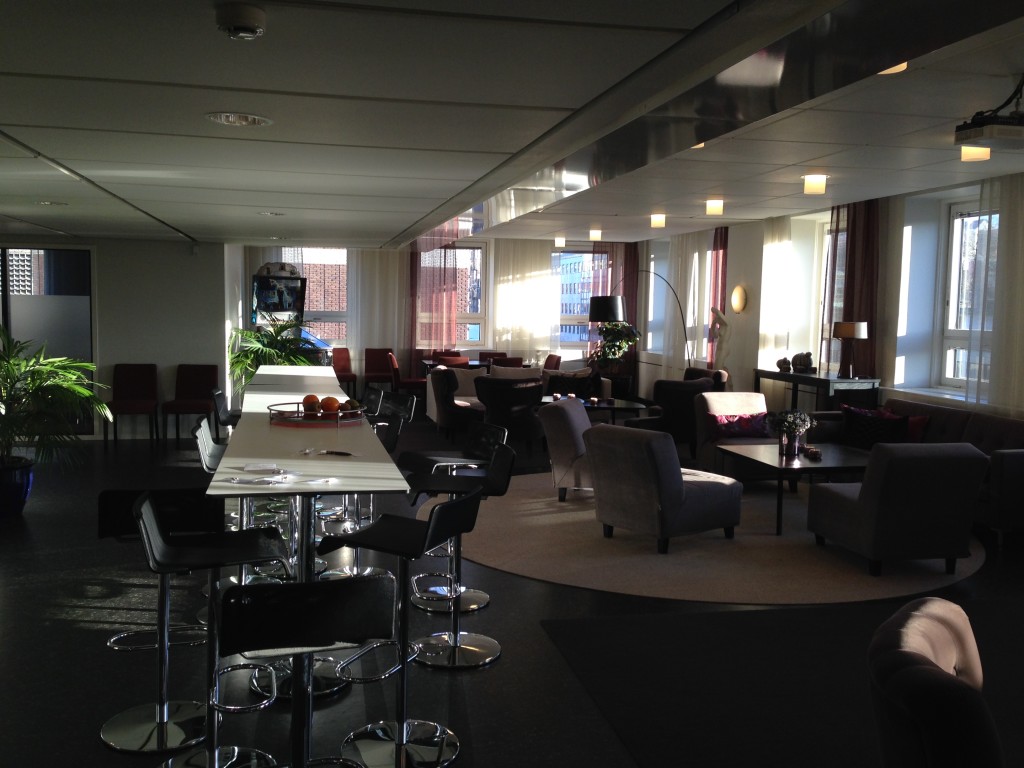 While traveling in November 2013, I stopped by the office of one of my Happy Melly colleagues at Knowit Management, a consulting firm in the heart of downtown Stockholm.
While traveling in November 2013, I stopped by the office of one of my Happy Melly colleagues at Knowit Management, a consulting firm in the heart of downtown Stockholm.
While there, I had the opportunity to interview Fredrik Wiik, a Management 3.0 facilitator and Senior Consultant whose specialty is helping companies get more value from their product development efforts.
Fredrik had an interesting story to tell about working as an IT Project Portfolio Manager in a big telecom company with a portfolio of collaboration projects.
The company has been working with remote capabilities since the early 1990’s when the rapid evolution of new tools was prompting the need for different kinds of collaboration.
Benefits
The ability to get people working together regardless of location adds an extra aspect of agility in the organization that was previously not possible. One of the discoveries was that the organizational hierarchy used to limit collaboration – just by nature. For example, in the early days, when someone had an idea, they had to fill out and submit a form to a department. Now there are virtual idea boxes resulting in new ideas being shared from people all over the world – people who had never contributed before! This resulted in the pulling of information from within – instead of pushing information top-down and out.
The organizational hierarchy used to limit collaboration – just by nature.
Challenges
To achieve a faster, more agile way of working together, the company encouraged the formation of communities of practices around new medias so they could better tap into the knowledge of their organization. Instead of being limited to people in a particular office, employees could easily find others in the organization with particular competencies – all over the world. In this way, teams could get fast feedback from multiple disciplines. And with the ability to collaborate remotely, it became easier to access and communicate with each other on a regular basis. In a company with this kind of size and breadth, that is a very valuable benefit! Not to mention, a significant savings on travel costs.
Tools
The company has a centralized collaboration system with a number of tools to choose from. Each team and knowledge worker chooses the systems that will work for them. Keeping things simple is always a goal. At times, even just a thumbs up or down is useful. A number of micro blogging and instant messaging tools were used, which helped lower the obstacles for people communicating together. Even just working on different floors in the same office as someone could be a barrier. Many people wouldn’t run upstairs just to ask a simple question. They were more likely to email the question or save the question to ask with others in a batch. Even a simple tool like instant messaging can help to reduce this kind of batching and queuing in the system.
Any global company with this size will struggle with speed of development and communication. But rather than view it as a problem, it is seen as an opportunity to build a more entrepreneurial, vision-driven culture. As well as being good for innovation, this was a more inspiring culture for the employees.
More about Fredrik Wiik…
Fredrik is a Management 3.0 facilitator and Senior Consultant at Knowit Management in Stockholm Sweden. His specialization is helping companies get more value from their product development efforts, which includes key aspects such as time to market and business agility. He has a special interest in organizations with the size and complexity that requires a scaled agile set-up. For more information contact Fredrik.

